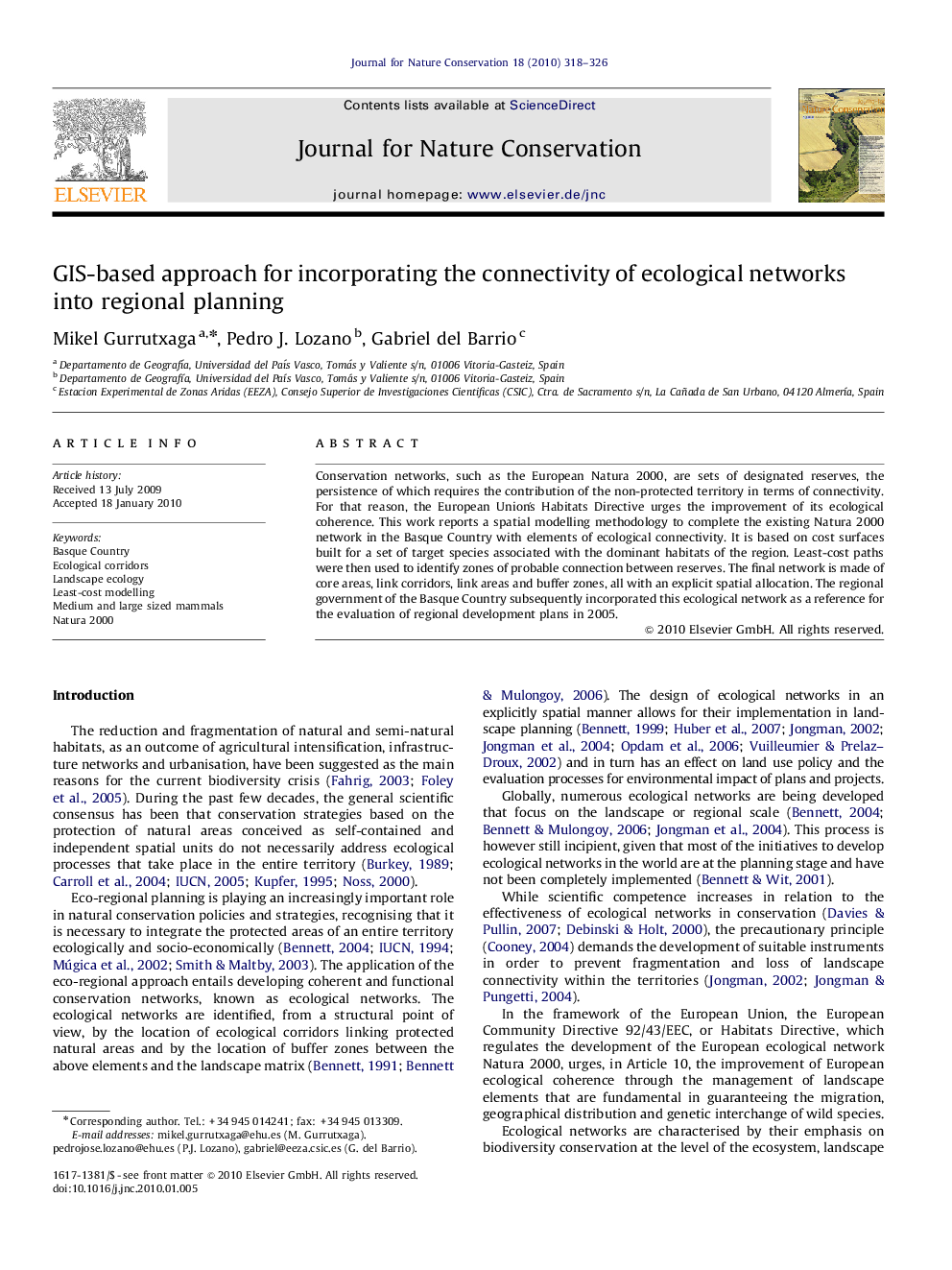| Article ID | Journal | Published Year | Pages | File Type |
|---|---|---|---|---|
| 4400213 | Journal for Nature Conservation | 2010 | 9 Pages |
Conservation networks, such as the European Natura 2000, are sets of designated reserves, the persistence of which requires the contribution of the non-protected territory in terms of connectivity. For that reason, the European Union´s Habitats Directive urges the improvement of its ecological coherence. This work reports a spatial modelling methodology to complete the existing Natura 2000 network in the Basque Country with elements of ecological connectivity. It is based on cost surfaces built for a set of target species associated with the dominant habitats of the region. Least-cost paths were then used to identify zones of probable connection between reserves. The final network is made of core areas, link corridors, link areas and buffer zones, all with an explicit spatial allocation. The regional government of the Basque Country subsequently incorporated this ecological network as a reference for the evaluation of regional development plans in 2005.
